Milwaukee 48-59-2001 Handleiding
Milwaukee
Batterij-oplader
48-59-2001
Bekijk gratis de handleiding van Milwaukee 48-59-2001 (16 pagina’s), behorend tot de categorie Batterij-oplader. Deze gids werd als nuttig beoordeeld door 13 mensen en kreeg gemiddeld 5.0 sterren uit 7 reviews. Heb je een vraag over Milwaukee 48-59-2001 of wil je andere gebruikers van dit product iets vragen? Stel een vraag
Pagina 1/16

Cat. No. / No de cat.
48-59-2001
OPERATOR'S MANUAL
MANUEL de L'UTILISATEUR
MANUAL del OPERADOR
WARNING To reduce the risk of injury, user must read and understand operator's manual.
AVERTISSEMENT An de réduire le risque de blessures, l'utilisateur doit lire et bien
comprendre le manuel.
ADVERTENCIA Para reducir el riesgo de lesiones, el usuario debe leer y entender el manual.
M4™ LITHIUM-ION BATTERY CHARGER
M4™ REDLITHIUM 2.0 BATTERY
CHARGEUR AU LITHIUM-ION M4™
BATTERIE AU LITHIUM-ION REDLITHIUM M4™ 2.0
CARGADOR PARA BATERÍAS DE IONES DE LITIO DE M4™
BATERÍA DE IONES DE LITIO DE M4™ REDLITHIUM 2.0

2
This operator's manual contains important safety
and operating instructions for MILWAUKEE M4™
Lithium-Ion batteries and the MILWAUKEE M4™
Lithium-Ion battery charger. Before using the batter-
ies and charger, read this operator's manual, your
tool operator's manual, and all labels on the battery,
charger and tool.
1.
CAUTION
TO REDUCE THE RISK OF IN-
JURY, CHARGE MILWAUKEE
M4™ LITHIUM-ION BATTERIES ONLY IN
MILWAUKEE M4™ LITHIUM-ION CHARGERS.
Other types of chargers may cause personal
injury or damage. Do not wire a battery to a
power supply plug or car cigarette lighter. Batter-
ies will be permanently disabled or damaged.
2. USE MILWAUKEE M4™ LITHIUM-ION BATTER-
IES ONLY ON MILWAUKEE M4™ LITHIUM-ION
TOOLS. Use with other tools may result in a risk
of re, electric shock or personal injury.
3. AVOID DANGEROUS ENVIRONMENTS. Do not
charge battery in rain, snow, damp or wet loca-
tions. - Do not use battery or charger in the pres
ence of explosive atmospheres (gaseous fumes,
dust or ammable materials) because sparks may
be generated when inserting or removing battery,
possibly causing re.
4. CHARGE IN A WELL VENTILATED AREA. Do
not block charger vents. Keep them clear to allow
proper ventilation. Do not allow smoking or open
ames near a charging battery. Vented gases
may explode.
5. MAINTAIN CHARGER CORD. When unplugging
charger, pull plug rather than cord to reduce the
risk of damage to the electrical plug and cord.
Never carry charger by its cord. Keep cord from
heat, oil and sharp edges. Make sure cord will
not be stepped on, tripped over or subjected to
damage or stress. Do not use charger with dam-
aged cord or plug. Have a damaged cord replaced
immediately with identical replacement parts (see
“Maintenance”).
6. DO NOT USE AN EXTENSION CORD UNLESS
IT IS ABSOLUTELY NECESSARY. Using the
wrong, damaged or improperly wired extension
cord could result in the risk of re and electrical
shock. If an extension cord must be used, plug
the charger into a properly wired 16 gauge or
larger extension cord with pins that are the same
number, size and shape as the pins on the char-
ger. Make sure that the extension cord is in good
electrical condition.
7. CHARGER IS RATED FOR 120 VOLT AC ONLY.
Charger must be plugged into an appropriate
receptacle.
8. USE ONLY RECOMMENDED ATTACHMENTS.
Use of an attachment not recommended or sold
by the battery charger or battery manufacturer
may result in a risk of re, electric shock or per-
sonal injury.
9. UNPLUG CHARGER when not in use. Remove
battery from unplugged chargers.
10. TO REDUCE THE RISK OF ELECTRIC SHOCK,
always unplug charger before cleaning or main-
tenance. Use a Ground Fault Circuit Interrupter
(GFCI) to reduce shock hazards.
11. DO NOT BURN OR INCINERATE BATTERIES.
Batteries may explode, causing personal injury or
damage. Toxic fumes and materials are created
when batteries are burned.
12. DO NOT CRUSH, DROP, OR DAMAGE bat-
teries. Do not use a battery or charger that has
received a sharp blow, been dropped, run over,
or damaged in any way (e.g., pierced with a nail,
hit with a hammer, stepped on).
13. DO NOT DISASSEMBLE. Incorrect reassembly
may result in the risk of electric shock, re or
exposure to battery chemicals. If it is damaged,
take it to a MILWAUKEE service facility.
14. BATTERY CHEMICALS CAUSE SERIOUS
BURNS. Never allow contact with skin, eyes, or
mouth. If a damaged battery leaks battery chemi-
cals, use rubber or neoprene gloves to dispose of
it. If skin is exposed to battery uids, wash with
soap and water and rinse with vinegar. If eyes
are exposed to battery chemicals, immediately
ush with water for 20 minutes and seek medical
attention. Remove and dispose of contaminated
clothing.
15.DO NOT SHORT CIRCUIT. A short-circuited
battery pack may cause re, personal injury, and
product damage. A battery pack will short circuit
if a metal object makes a connection between
the positive and negative contacts on the battery
pack. Do not place a battery pack near anything
that may cause a short circuit, such as coins, keys
or nails in your pocket.
16. DO NOT ALLOW FLUIDS TO FLOW INTO BAT-
TERY PACK. Corrosive or conductive uids, such
as seawater, certain industrial chemicals, and
bleach or bleach containing products, etc., can
cause a short circuit..
17. STORE YOUR BATTERY AND CHARGER in a
cool, dry place. Do not store battery where tem-
peratures may exceed 120°F (50°C) such as in
direct sunlight, a vehicle or metal building during
the summer. Charger will charge the battery when
the battery's internal temperature is between
14°F (-10°C) and 140°F (60°C). When the battery
temperature is outside that range, charging will
not occur.
READ AND SAVE
ALL INSTRUCTIONS
FOR FUTURE
REFERENCE.
GENERAL SAFETY RULES
WARNING
READ AND UNDERSTAND ALL INSTRUCTIONS. Failure to follow all
instructions listed below, may result in electric shock, re and/or serious personal injury.
SAVE THESE INSTRUCTIONS

3
FUNCTIONAL
DESCRIPTION
1. Contacts
2. Tabs
3. Vents
4. Bay
5. Slots
Continuous red light: charging
Continuous green light: charging is complete
Flashing red light: battery is too hot or too cold -
charging will begin automatically when battery
reaches correct charging temperature
Flashing green and red light. Damaged or faulty
battery
6. Light indicator
6
3
5
4
2
1
SYMBOLOGY
Volts
Direct Current
Alternating Current
Double Insulated
Properly Recycle Batteries
Hertz
Amps
mA Milliamps
UL Listing for Canada and U.S.
SPECIFICATIONS
Charger Cat. No. 48-59-2001 ................................
Input Volts AC ....................................................120
Input Milliamps...................................................300
Output Volts DC .....................................................4
Output Amps ..........................................................3
M4™ Li-Ion Battery Packs ............................ 4 V DC
M4™ LITHIUM-ION
BATTERY
WARNING
To reduce the risk of re, personal
injury, and product damage due to
a short circuit, never immerse your tool, battery
pack or charger in uid or allow a uid to ow
inside them. Corrosive or conductive uids, such
as seawater, certain industrial chemicals, and
bleach or bleach containing products, etc., can
cause a short circuit.
Maintenance and Storage
Do not expose your battery or cordless tools to water
or rain, or allow them to get wet. This could damage
the tool and battery. Do not use oil or solvents to
clean or lubricate your battery. The plastic casing
will become brittle and crack, causing a risk of injury.
Store batteries at room temperature away from mois-
ture. Do not store in damp locations where corrosion
of terminals may occur. As with other battery types,
permanent capacity loss can result if the battery is
stored for long periods of time at high temperatures
(over 120° F). MILWAUKEE Lithium-Ion batteries
maintain their charge during storage longer than
other battery types. After about six months of storage,
charge the battery as normal.
WARNING
To reduce the risk of injury or ex-
plosion, never burn or incinerate a
battery pack even if it is damaged, dead or com-
pletely discharged. When burned, toxic fumes
and materials are created.
Disposing of MILWAUKEE Lithium-Ion
Battery Packs
MILWAUKEE Lithium-Ion battery packs are more
environmentally friendly than some other types of
power tool battery packs (e.g., nickel-cadmium).
Always dispose of your battery pack according to
federal, state and local regulations. Contact a re-
cycling agency in your area for recycling locations.
Even discharged battery packs contain some energy.
Before disposing, use electrical tape to cover the
terminals to prevent the battery pack from shorting,
which could cause a re or explosion.
RBRC Battery Recycling Seals
The RBRC™ Battery Recycling Seals (see "Sym-
bology") on your tool battery packs indicate that
MILWAUKEE has arranged for the recycling of
that battery pack with the Rechargeable Battery
Recycling Corporation (RBRC). At the end of your
battery pack's useful life, return the battery pack to
a MILWAUKEE Branch Oce/Service Center or the
participating retailer nearest you. For more informa-
tion, visit the RBRC web site at www.rbrc.org.
Product specificaties
| Merk: | Milwaukee |
| Categorie: | Batterij-oplader |
| Model: | 48-59-2001 |
Heb je hulp nodig?
Als je hulp nodig hebt met Milwaukee 48-59-2001 stel dan hieronder een vraag en andere gebruikers zullen je antwoorden
Handleiding Batterij-oplader Milwaukee
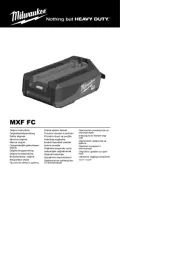
15 Juni 2025

15 Juni 2025

10 Juni 2024

10 Juni 2024

16 Juni 2023

13 Mei 2023

26 April 2023

17 April 2023

12 April 2023

3 April 2023
Handleiding Batterij-oplader
- Akyga
- Bigben Interactive
- Ryobi
- Deye
- Schaudt
- Daewoo
- Yard Force
- Livoo
- Fein
- Black Decker
- Growatt
- Sungrow
- Belkin
- Hähnel
- Hikoki
Nieuwste handleidingen voor Batterij-oplader
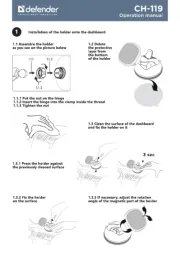
16 September 2025
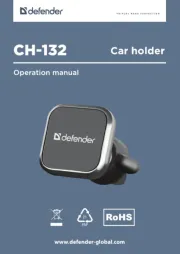
15 September 2025
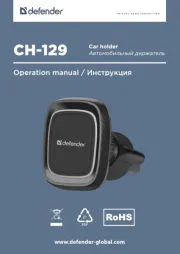
15 September 2025
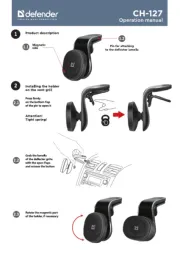
15 September 2025
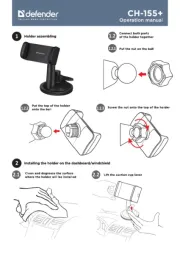
15 September 2025
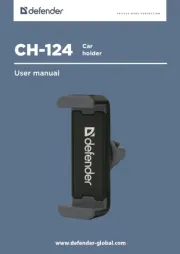
15 September 2025
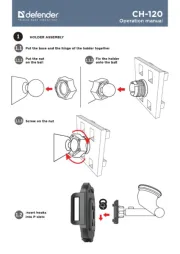
15 September 2025
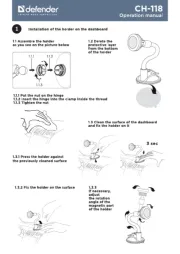
15 September 2025
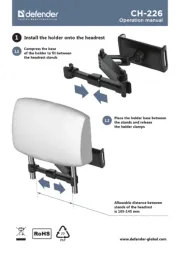
15 September 2025
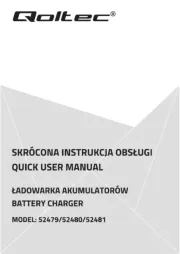
12 September 2025